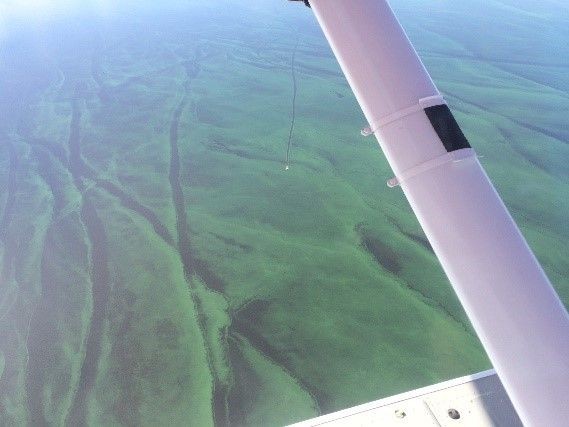White Iron Chain Of Lakes Association
Minnesota’s Approach to Protecting Lake of the Woods
By Kelli Saunders
It’s been very interesting to watch the progress that has been made over the last 12 years or so with regards to understanding water quality conditions in this watershed. Today, I’m going to focus on the approach used by our neighbours to the south. There is a very systematic, well funded, practical approach used by the state of Minnesota – when a water quality condition doesn’t meet the state standard, a whole process kicks into gear to study the problem and determine what is needed to fix it.
Over ten years ago, Minnesota’s water quality sampling on Lake of the Woods indicated that the lake had levels of both total phosphorus and chlorophyll-a above state standards and these contribute to algal blooms and other conditions harmful to aquatic life and recreation. Because the state standard was not met, the U.S. portion of the lake was deemed “impaired”. Under the US Clean Water Act, states are required to develop total maximum daily load (TMDL) studies for their impaired waters – basically, this is determining the daily load of a pollutant the waterbody can handle, but stay within the standard.
The TMDL study also includes the development of a detailed implementation plan which outlines the necessary actions to restore water quality to within the standards. When a water body is restored, it can be removed from the impaired waters list. In addition, monitoring will continue over the long term to ensure standards are maintained. The bulk of the work began in 2015 and in the summer of 2018, the final report was submitted to the USEPA and is currently under review before final approval.
The TMDL study examines the pollutant sources that are contributing to the water quality standard exceedances. These sources could include tributaries to the Rainy River, tributaries that drain directly into the lake, septic systems, wastewater treatment plants, and industrial facilities. An additional source could be the lake itself, through a process referred to as ‘internal loading’, where historically accumulated phosphorus in the lake bottom comes back into the water. Finally, atmospheric deposition can be a source when nutrients are carried into the system through wind currents and precipitation. Since Lake of the Woods has such a large surface area, the effects of atmospheric deposition will likely be higher than with most other lake TMDL studies.
Once the nutrient sources are identified, the TMDL study examines how much pollutant loading Lake of the Woods can take in without becoming impaired. Once the lake’s ‘loading capacity’ is determined, the pollution reduction needed to restore water quality is calculated by subtracting the current amount of pollution loading from the lake’s loading capacity. The TMDL study also accounts for a margin of safety and future growth.
The goal of Minnesota’s TMDL program is to address Minnesota sources of pollution that contribute to a water quality problem or impairment in Minnesota’s waters. Minnesota recognizes and cares about the downstream impacts of their nutrient sources to the waters of Canada and they have a long history of working cooperatively with Canadian partners, which predates this TMDL project. In fact, many of the numerous cooperative efforts and activities over the past 15+ years have generated significant data and information that have been directly used in the development of the TMDL. Last summer, our Minnesota partners came to Kenora to talk about the TMDL and will share more information once the study is approved and finalized.
This series is provided as part of the International Watershed Coordination Program of the Lake of the Woods Water Sustainability Foundation.
Kelli Saunders, M.Sc., is the International Watershed Coordinator with the Lake of the Woods Water Sustainability Foundation.
When you subscribe to the blog, we will send you an e-mail when there are new updates on the site so you wouldn't miss them.